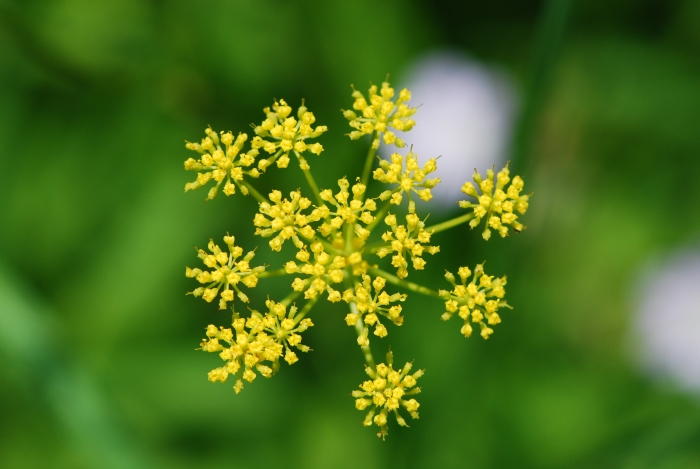Wild Parsnip
(Pastinaca sativa)
Wild Parsnip (Pastinaca sativa)
/
/

Joshua Mayer
CC BY-SA 2.0
Image By:
Joshua Mayer
Recorded By:
Copyright:
CC BY-SA 2.0
Copyright Notice:
Photo by: Joshua Mayer | License Type: CC BY-SA 2.0 | License URL: https://creativecommons.org/licenses/by/2.0/ | Uploader: wackybadger | Publisher: Flickr |




















































Estimated Native Range
Summary
Pastinaca sativa, commonly known as Wild Parsnip, is a biennial herb that is often grown as an annual in cultivation. It is native to grasslands and open places in Europe. This plant is characterized by its long taproot with cream-colored skin and flesh, which becomes sweeter after exposure to winter frosts. Wild Parsnip typically grows to a height of 0.5 to 1 meter and has a rosette of pinnate leaves with broad leaflets. Its yellow flowers are arranged in umbels and bloom in the second year, typically in the summer, and are moderately showy. The foliage can cause phytophotodermatitis, so care should be taken when handling the plant.
Wild Parsnip is valued for its edible root, which is sweeter than carrots and is used in culinary applications. It is also appreciated for its hardiness and ease of growth in a variety of soil types, although sandy and loamy soils are preferred for optimal root development. In cultivation, it requires full sun and medium water, and can tolerate a range of soil drainage conditions. It is important to sow seeds directly in the ground in early spring and maintain weed-free conditions. Harvesting begins after the first frost in late fall and can continue through winter, with the roots becoming sweeter due to the conversion of starches to sugars in low soil temperatures. However, growers should be cautious as Wild Parsnip can become invasive outside its native range, particularly in the United States.CC BY-SA 4.0
Wild Parsnip is valued for its edible root, which is sweeter than carrots and is used in culinary applications. It is also appreciated for its hardiness and ease of growth in a variety of soil types, although sandy and loamy soils are preferred for optimal root development. In cultivation, it requires full sun and medium water, and can tolerate a range of soil drainage conditions. It is important to sow seeds directly in the ground in early spring and maintain weed-free conditions. Harvesting begins after the first frost in late fall and can continue through winter, with the roots becoming sweeter due to the conversion of starches to sugars in low soil temperatures. However, growers should be cautious as Wild Parsnip can become invasive outside its native range, particularly in the United States.CC BY-SA 4.0
Plant Description
- Plant Type: Herb
- Height: 4-5 feet
- Width: 0.3-0.7 feet
- Growth Rate: Moderate
- Flower Color: Yellow
- Flowering Season: Summer
- Leaf Retention: Deciduous
Growth Requirements
- Sun: Full Sun
- Water: Medium
- Drainage: Slow, Medium, Fast
Common Uses
Edible*Disclaimer: Easyscape's listed plant edibility is for informational use. Always verify the safety and proper identification of any plant before consumption.
Natural Habitat
Native to grasslands and open places in Europe
Other Names
Common Names: Common Parsnip, Almindelig Pastinak, Pastinak, Panais, Panais Cultivé, Panais Sauvage, Pastinaca, Pastinaak En Brandpastinaak, Palsternacka, Ou Fang Feng
Scientific Names: , Pastinaca sativa, Peucedanum sativum, Peucedanum pastinaca, Elaphoboscum sativum, Heracleum angustifolium, Heracleum polyphyllum, Pastinaca capensis, Pastinaca fleishmannii, Pastinaca germanica
GBIF Accepted Name: Pastinaca sativa L.